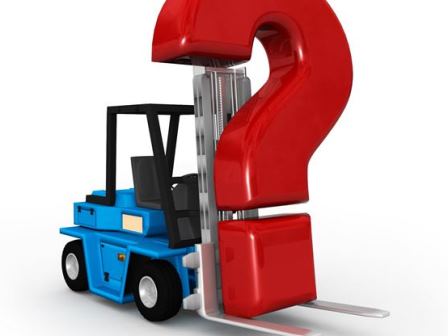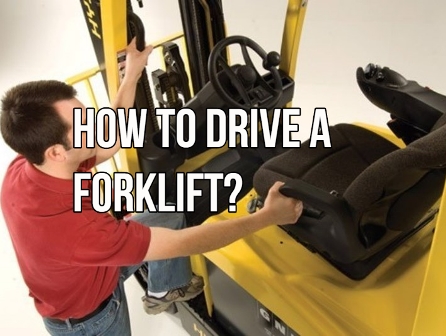A course has general information about the classes and divisions of forklifts commonly used in the workplace.
It also covers the principles necessary to understand safe loading, transferring loads, and unloading. Forklift operator training requirements and general best practices in operating, servicing, and maintaining forklifts are discussed.
The hazards associated with operating forklifts in enclosed areas and construction sites are also discussed.
A powered industrial truck is defined as a fork truck, tractor, platform lift truck, motorized hand truck, and other specialized industrial trucks powered by electric motors or internal combustion engines.
Powered industrial trucks, often called forklifts or lift trucks, can be ridden or controlled by a walking operator.
As you can see in the photo on the right, forklifts have been around a long time and they’ve gone through some significant design improvements.
A course contains general information about:
- the kinds of forklifts commonly available
- the principles of physics that allow a forklift to lift and move heavy loads safely
- forklift operator training requirements
- basic operator safety rules
- hazardous locations where carbon monoxide is a problem or a special forklift is needed
- safety while servicing a forklift
A course is not designed to be a substitute for OSHA-required hands-on forklift operator training in the operation of specific forklifts. The course does not include safety regarding compressed air or nonflammable compressed gas-operated industrial trucks, farm vehicles, vehicles intended primarily for earth moving, or over-the-road hauling.
Forklift safety course
The forklift safety course covers operations in the workplace. What you will learn includes the critical dimensions of your forklift.
The operating environment where travel and maneuvering are verified. Ramps and inclines. Pedestrian safety and closed areas.
Forklift dimensions operators need to know to determine if the forklift can safely perform tasks in the available space.
The critical measurements of a powered industrial forklift are overall lifted height, fork clearance height, and maximum height.
Understanding the critical dimensions of your forklift can create various hazards, such as hitting ceiling fixtures, low-hanging lights, heaters, racks, doors, or trailer roofs.
Safe practices include knowing the dynamic range of your vehicle to determine if your forklift can safely do the job in the available space you need to consider.
Known height when determining if your forklift can fit into a tight area, fork clearance is also considered when determining if your forklift can lift the load to the required height, considering overall height.
A driving safety course has general information on the forklift classes and divisions commonly used in the workplace.
Related Topics

Forklift Test Questions and Answers
Passing the forklift certification test is your next step.

Forklift questions
Now that you have decided that you want to be a forklift driver, you may be wondering what comes next.

How to drive a Forklift?
Forklift safety is of the utmost importance, and driving a forklift improperly presents various risks to both yourself and others.

How to operate a stand-up forklift?
Two main ways of operating a forklift exist. Operating while sitting down, and operating while standing up.
